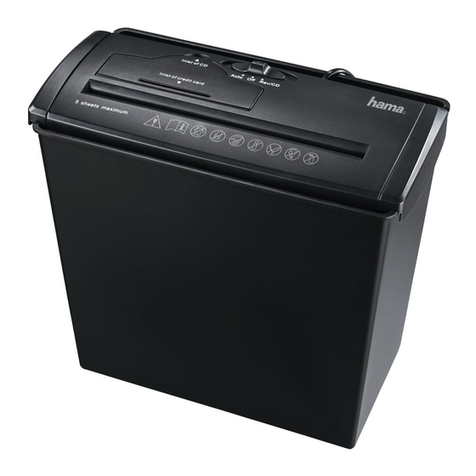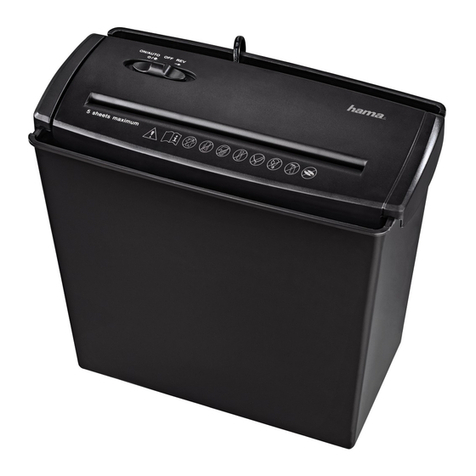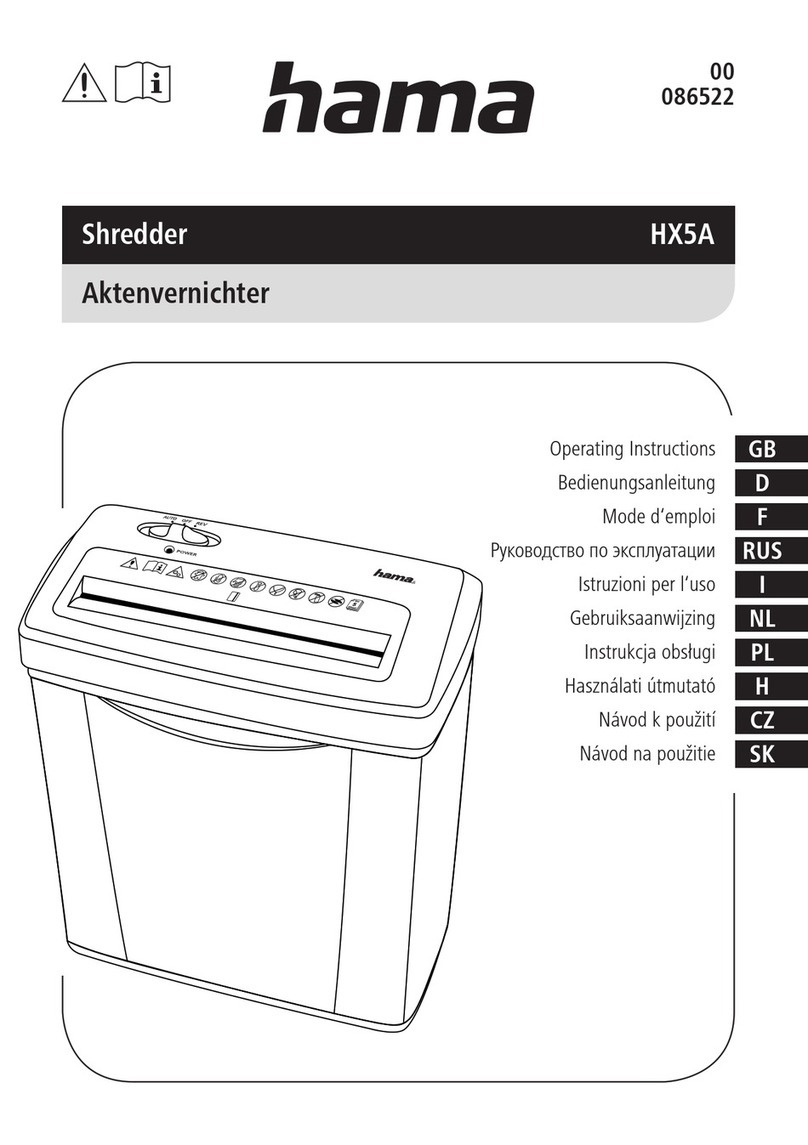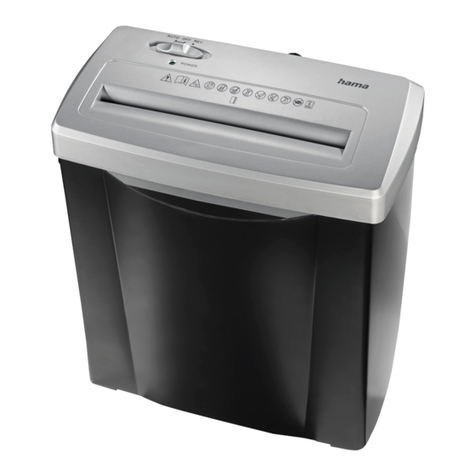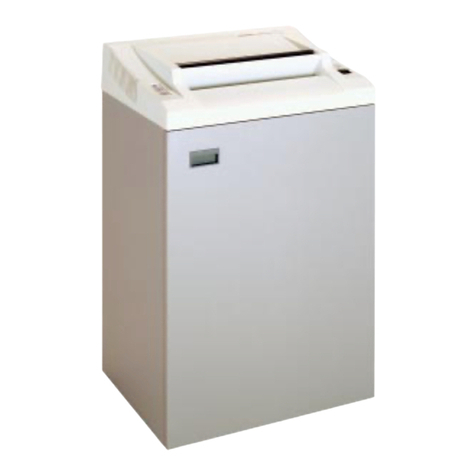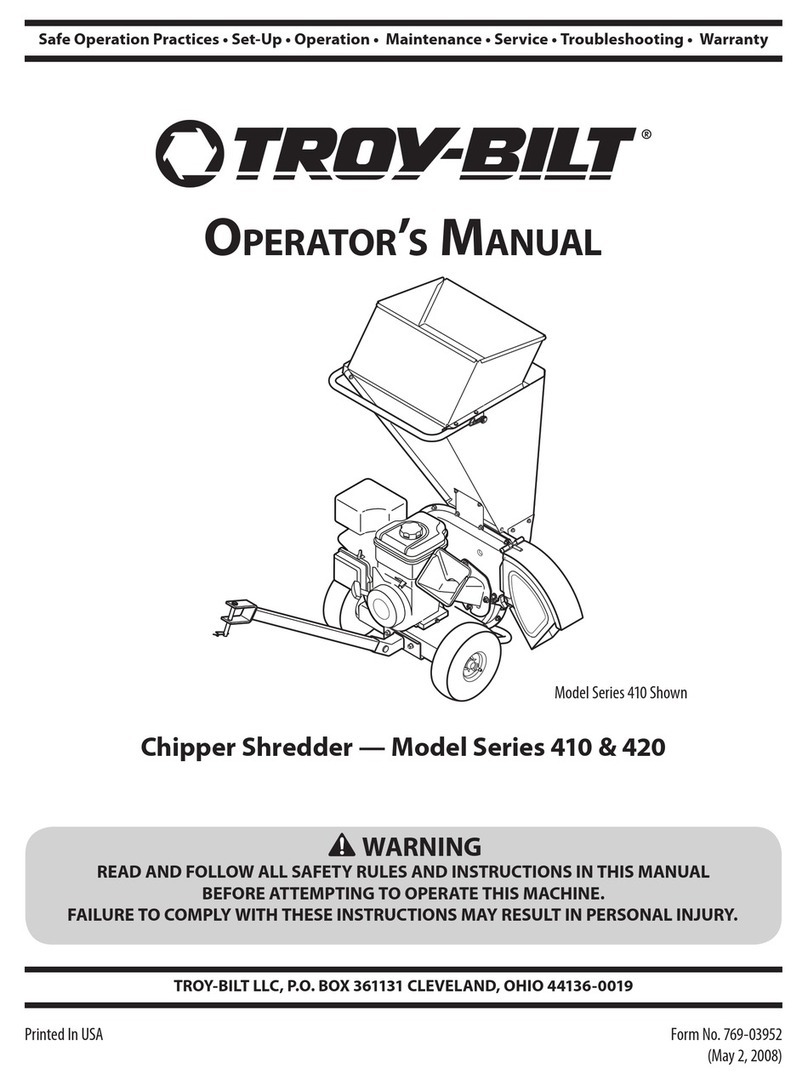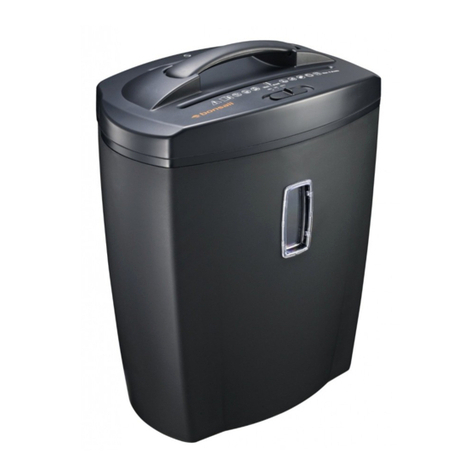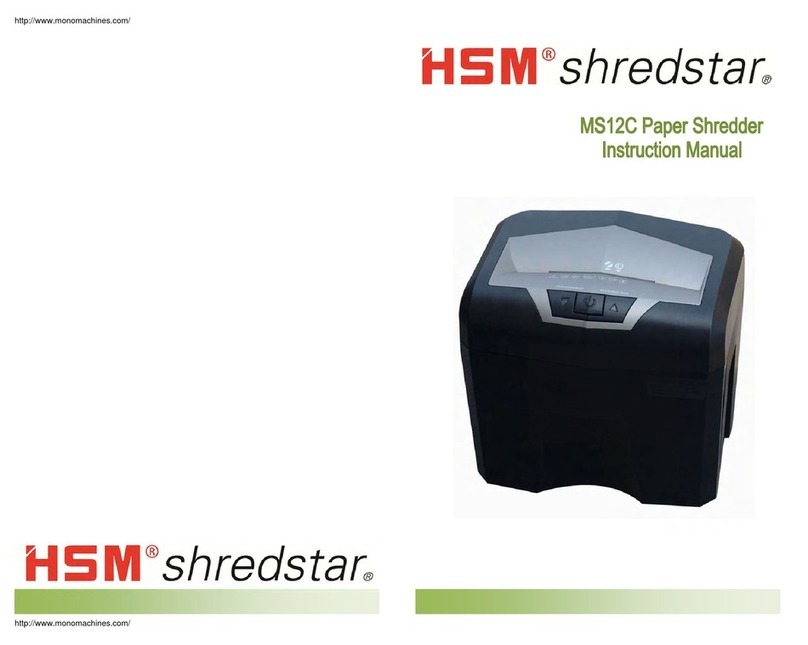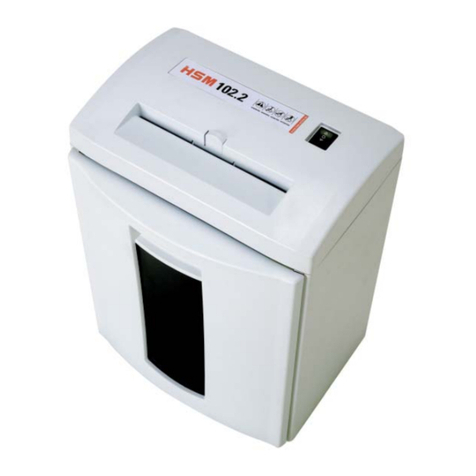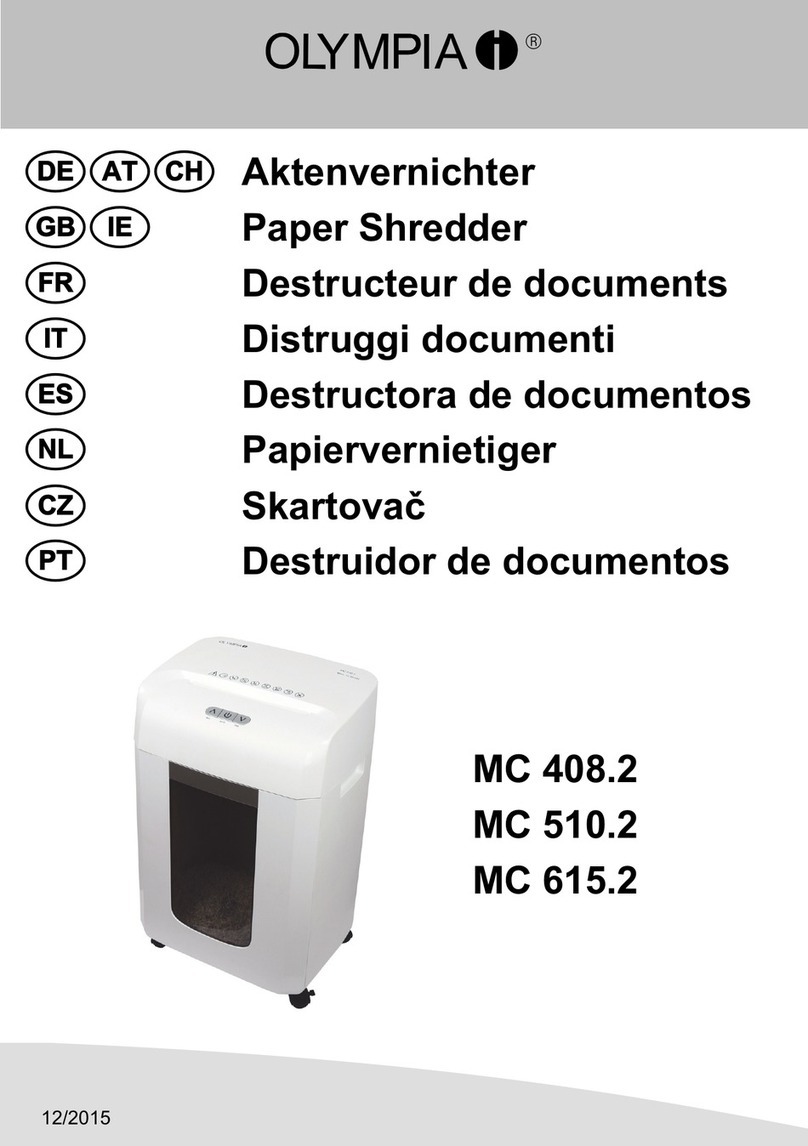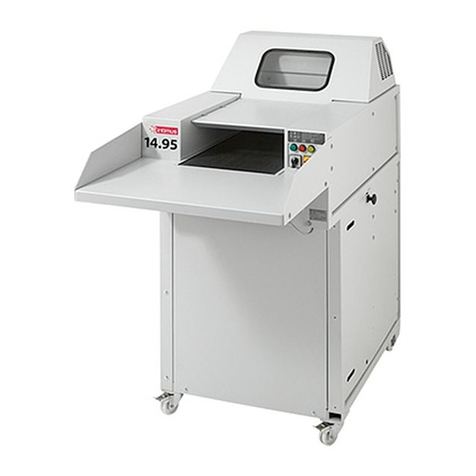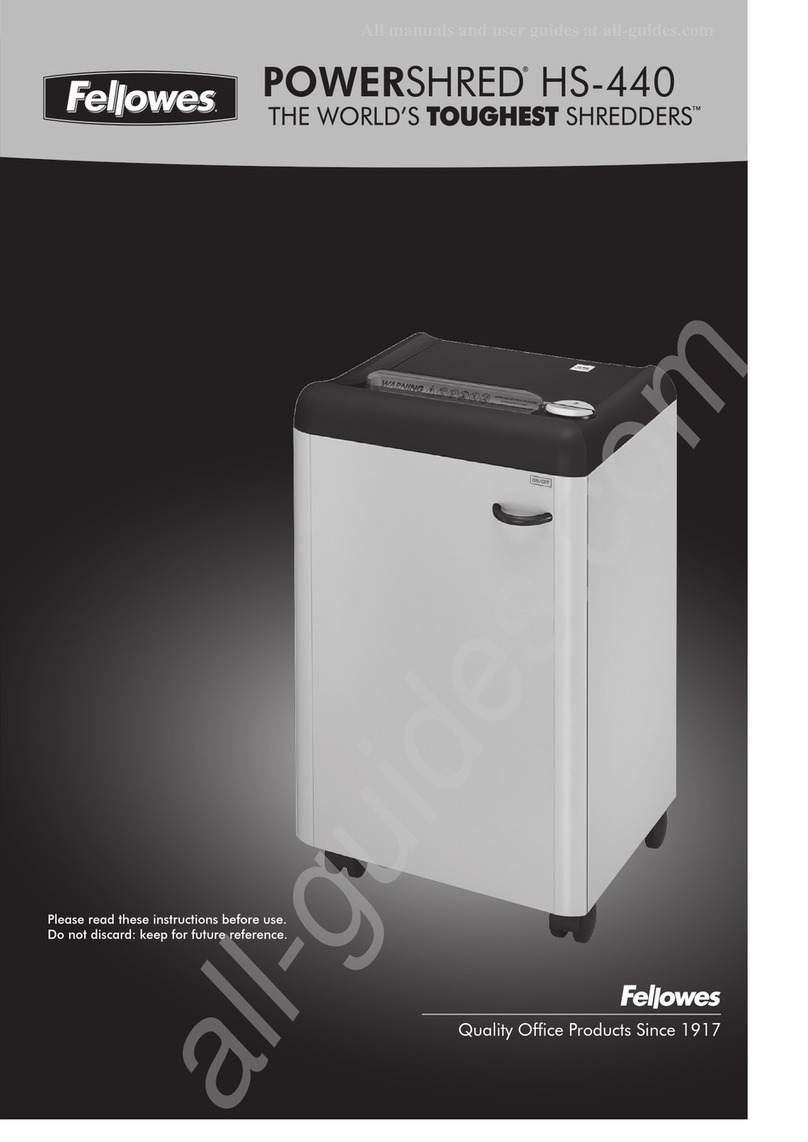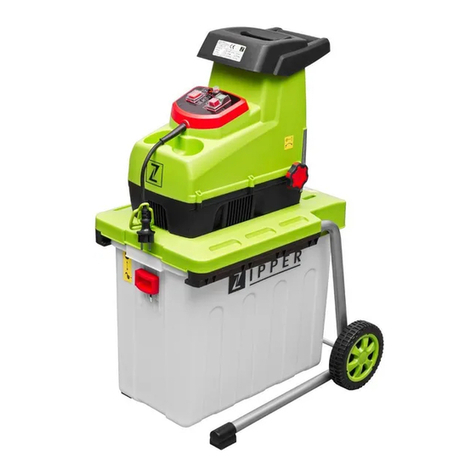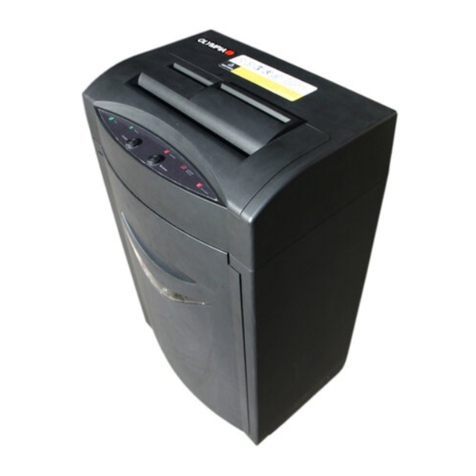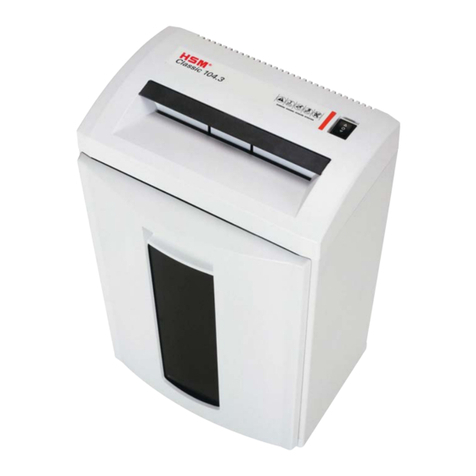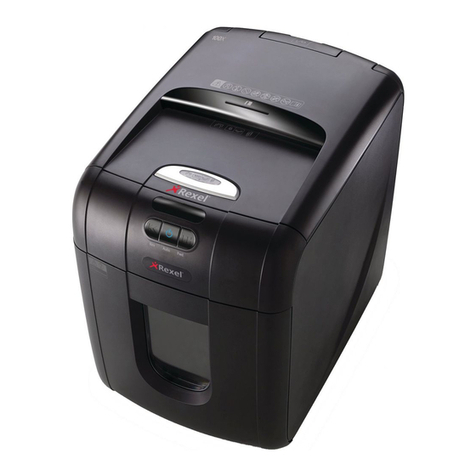Hama EWS-1400 User manual

C
14
.6
o
%
MAX
HUMIDITY
55
TENDENCY
18
o
C
.3
MAX
%
HUMIDITY
67
PM
Z
Z
51
30-10
TH
E
CZ
D
GB
I
RO
PL
RUS
SK
Operating Instructions
Bedienungsanleitung
Instrucciones de uso
Руководство по эксплуатации
Istruzioni per l‘uso
Instrukcja obsługi
Návod k použití
Návod na použitie
Manual de utilizare
Color EWS-1400Weather Station
Wetterstation
00
136259


B
A
TENDENCY
PM
Z
Z
MAX
%
oo
%
MAX
HUMIDITY
HUMIDITY
CC
18
.3
14
.6
67 55
51
30-10
TH
MODE
4.5V
ALARM
SEARCH
+-
117 18 19 20 21
22
14 13 12 23 25
16
15
7
8
9
10
26
27
28
24
31
30
29
11
2 3 4 5 6

2
GOperating instruction
Controls and Displays
A Base station
1. Outdoor temperature
2. Measuring station radio symbol
3. Weather forecast symbol
4. Atmospheric pressure trend
5. Room humidity
6. Room temperature
7. Room humidity trend
8. Wireless symbol
9. Weekday
10. Alarm symbol
11. Month
12. Day
13. Summer time
14. Time
15. Outdoor humidity trend
16. Outdoor humidity
17. MODE button
= settings / conrm the set value
18. +button
= increases the current set value/recalls the
saved maximum/minimum values
19. –button
= decreases the current setting / toggles between
°C and °F / activates/deactivates manual radio
signal
20. ALARM button
= display / setting alarm modes
21. SEARCH button
= manual search for a signal from the measuring
station
22. SNOOZE/LIGHT button
= temporarily interrupts the alarm / activates
the backlight
23. socket
24. Recess for wall mounting
25. Battery compartment
B Measuring station
26. Transmission indicator light
27. Display
28. CH button = channel selection
29. Recess for wall mounting
30. °C/°F button = switches between °C and °F
31. Battery compartment
Thank you for choosing a Hama product.
Take your time and read the following instructions
and information completely. Please keep these
instructions in a safe place for future reference. If
you sell the device, please pass these operating
instructions on to the new owner.
1. Explanation of Warning Symbols and Notes
Warning
This symbol is used to indicate safety instructions
or to draw your attention to specic hazards
and risks.
Note
This symbol is used to indicate additional
information or important notes.
2. Package Contents
•Color EWS-1400 Weather Station
(base station for indoors / outdoor measuring
station)
•2AAA batteries
•2AA batteries
•Power supply unit
•These operating instructions

3
3. Safety Notes
•The product is intended for private, non-
commercial use only.
•Do not operate the product outside the power
limits given in the specications.
•Do not use the product in moist environments and
avoid splashes.
•Do not use the product in the immediate vicinity of
heaters or other heat sources or in direct sunlight.
•Do not use the product in areas where the use of
electronic devices is not permitted.
•Do not place the product near interference elds,
metal frames, computers, TVs, etc. Electronic
devices and window frames can negatively affect
the product’s functionality.
•Do not drop the product and do not expose it to
any major shocks.
•Do not open the device or continue to operate it if
it becomes damaged.
•Do not attempt to service or repair the product
yourself. Leave any and all service work to qualied
experts.
•Keep the packaging material out of the reach of
children due to the risk of suffocation.
•Dispose of packaging material immediately
according to locally applicable regulations.
•Do not modify the product in any way. Doing so
voids the warranty.
Warning – Batteries
•Immediately remove and dispose of dead
batteries from the product.
• Only use batteries (or rechargeable batteries)
that match the specied type.
• Do not mix old and new batteries or batteries
of a different type or make.
• When inserting batteries, note the correct
polarity (+ and - markings) and insert the
batteries accordingly. Failure to do so could
result in the batteries leaking or exploding.
• Do not overcharge batteries.
•Keep batteries out of the reach of children.
• Do not short circuit the batteries/rechargeable
batteries and keep them away from uncoated
metal objects.
Warning
•Only connect the product to a socket that has
been approved for the device. The electrical
socket must always be easily accessible.
•Disconnect the product from the network using
the power button – if this is not available,
unplug the power cord from the socket.
4. Getting Started
4.1. Insert batteries / connect power supply
Measuring station
•Remove the screen protector from the display.
•Open the battery compartment (31) and remove
the contact breaker.
•Press the CH button (28) repeatedly to select
the channel the measuring station is to use for
transmission. CH1, CH2 or CH3 is shown on the
display.
•Select CH1.

4
•Press the °C/°F button (30) to choose between °C
and °F for the temperature display.
•Then close the battery compartment cover.
Note
Before use, ensure you insert the batteries in
the measuring station rst and then in the base
station.
Base station
•Remove the screen protector from the display.
•Plug the power supply connection cable into the
socket (23) on the base station. Switch the base
station on by plugging the power supply unit into
a power outlet approved for this purpose. The
socket must be close to the base station and easily
accessible.
•Alternatively, open the battery compartment (25)
and remove the contact breaker. Close the battery
compartment cover (25).
Note
If the batteries are inserted correctly and you
connect the power supply unit to the station,
the base station will automatically switch to the
external power supply.
4.2. Replacing the batteries
Note – Replacing the batteries
•Note that the stations have to be
resynchronised each time after you change the
batteries in the measuring or base station.
•To do this, remove the batteries from the other
station and then reinsert them, or change them
as required.
Measuring station
•When the symbol appears (next to the outdoor
humidity(16)), replace the 2 AAA batteries for the
measuring station with 2 new ones.
•Open the battery compartment (31), remove and
properly dispose of the depleted batteries, and
insert two new AAA batteries with the correct
polarity. Then close the battery compartment cover.
Base station
•When the symbol appears (next to the outdoor
humidity (5)), replace the 2 AA batteries for the
measuring station with 2 new ones.
•Open the battery compartment (25), remove and
properly dispose of the dead batteries and insert
two new AA batteries with the correct polarity.
Then close the battery compartment cover (25).
5. Installation
Note – Installation
•Werecommend initially placing the base and
measuring stations in the intended locations
without installing them and making all the
settings described in 6. Operation – to do.
•Only install the stations once the appropriate
settings have been made and a stable wireless
connection is established.

5
Note
•The wireless transmission range between the
measuring and base stations is up to 50 m in
open spaces.
•Before installation, ensure that wireless
transmission will not be disrupted by
interference or obstacles like buildings, trees,
vehicles, high-voltage lines, etc.
•Before the nal installation, ensure that there
is sucient reception between the intended
installation locations.
•When installing the measuring station, ensure
that it is protected from direct sunlight and
rain.
•The international standard height for measuring
air temperature is 1.25 m (4 ft) above ground.
Warning
•Buy special or suitable installation material
from a specialised dealer for wall-mounting.
•Ensure that no faulty or damaged parts are
installed.
•Never apply force during installation. This could
damage the product.
•Before installation, ensure that the chosen wall
is suitable for the weight to be mounted, and
make sure that there are no electrical wires,
water, gas or other lines at the installation site
on the wall.
5.1. Base station
•Use the base to position the base station on a
level surface.
•Alternatively, you can install the base station on a
wall using the opening (24) on the back.
5.2. Measuring station
•You can also position the measuring station on a
level outdoor surface.
•Werecommend installing the measuring station
securely on an outdoor wall (29).
•Install an anchor, screw, nail, etc. in the wall of
your choice.
•Hang up the base/measuring station using the
opening (24/29) intended for this purpose.
6. Operation
Note
Hold down the +button (18) or the –button (19)
to select the values faster.
6.1. Connection to the measuring station
•After you insert the batteries, the base station
automatically searches for a connection to the
measuring station and performs initial setup.
Note
•Initial setup takes approx. 3 minutes.
•During connection, the wireless symbol on the
measuring station will ash (2).
•Do not press any buttons during setup.
Otherwise, values may not be transmitted
correctly and there is a risk of value errors and
inaccuracies.
•The setup process is completed when the
indoor (5/6) and outdoor (1/16) measurement
data is displayed
•If the base station still does not receive a signal
from the measuring station, press and hold the
SEARCH button (21) for approx. 3 seconds to start
the manual search for the signal.

6
6.2. Basic and manual settings
Automatic setting using the DCF signal
•After the rst time the base station is switched on
and successful transmission is established between
the base station and the measuring station, the
clock will automatically search for a DCF signal.
During the search, the wireless symbol (8) will
ash.
Display Searching for the DCF
signal
Display ashing Active
Displayed continuously
Successful –
signal is being received
No display Inactive
•If the station still does not receive a signal, press
and hold the –button (19) for approx. 3 seconds
to start the manual search for the DCF signal. The
wireless symbol (8) will start to ash.
Note – Time settings
•The search process takes about 7 minutes. If
the search fails, it ends and is repeated at the
next clock hour.
•In the meantime you can, however, set the time
and the date manually.
•The clock automatically continues to search for
the DCF signal on a daily basis (between 1:00
a.m. and 5:00 a.m.). If the signal is received
successfully, the manually set time and date are
overwritten.
•Press and hold the –button (19) again for approx.
3 seconds to stop the manual search.
Note – Summer time
The clock automatically switches to summer time.
appears on the display as long as summer time
is activated.
(Manual) settings
•Press and hold the –button (19) for approx. 3
seconds to stop the search for the DCF signal. The
wireless symbol (8) goes out and you can set the
time manually.
•Press and hold the MODE button (17) for approx.
3 seconds to make the following settings one after
the other:
•12/24 hour format
•Time zone
•Hours
•Minutes
•Year
•Month
•Day
•Weekday
•To select the individual values, press the +button
(18) or the –button (19) and conrm each
selection by pressing the MODE button (17).
•Press the MODE button (17) immediately to adopt
the set value displayed and to skip onwards.
•If you do not make an entry for 15 seconds, you
automatically exit setup mode.
Note – Time zone
•The DCF signal can be received over long
distances, but always transmits the current
Central European Time in Germany. Make sure
you account for the time difference in countries
with another time zone.
•If you are in Moscow, the time is 3 hours
later than in Germany. This means that you
should set +3 for the time zone. The clock then
automatically sets the time to 3 hours after the
DCF signal received or relative to the manually
set time.

7
Note – Weekday
You can choose from German (GE), English (EN),
Danish (DA), Dutch (DU), Italian (IT), Spanish
(SP) and French (FR) for the weekday display.
Celsius/Fahrenheit
•Press the –button (19) to switch between °C and
°F for the temperature display.
Alarm
•Press the ALARM button (20) to display the alarm
time.
•Press and hold the ALARM button (20) for approx.
3 seconds to set the time of the alarm displayed.
The hours display begins to ash.
•Press the +button (18) or the –button (19) to
select the hour for the alarm time and conrm your
selection by pressing the ALARM button (20). The
minutes display begins to ash.
•Repeat the process to set the minutes for the
alarm time.
•If no entry is made for 15 seconds, setup mode
automatically exits.
•Press the ALARM button (20) repeatedly to
activate or deactivate the daily alarm. The alarm
symbol (10) will appear or disappear accordingly.
•If the alarm is triggered, the alarm symbol (10) will
begin to ash and an alarm will sound.
•Press any button except SNOOZE / LIGHT
(22) to stop the alarm. Otherwise, it will stop
automatically after 2 minutes.
Note – Snooze function
•While the alarm signal is sounding, press the
SNOOZE/LIGHT button (22) to activate the
snooze function. Zz begins to ash on the
display. The alarm signal will be stopped for 5
minutes, after which it will sound again.
•Press any button (except the SNOOZE/LIGHT
button (22)) to stop the snooze function and
the alarm.
6.3. Weather forecast
•Based on changes in the atmospheric pressure and
the data saved, the base station is able to make
weather forecasts for the next 12 to 24 hours.
Note – Weather forecast
The weather forecast function is not available during
the rst few hours of operation because it requires
data that is collected during operation.
The weather forecast and the current weather are
indicated by ve different symbols (3):
Symbol (3) Weather
Sunny
Slightly cloudy
Cloudy
Rainy
Stormy
•The weather station indicates a trend as to how
the values for the outdoor humidity (15), room
humidity (7) and atmospheric pressure (4) are likely
to develop over the next few hours.

8
Display Trend
Increasing
Constant
Decreasing
6.4. Maximum and minimum temperature and
humidity values
•The base station automatically stores the maximum
and minimum outdoor/indoor temperature and
humidity values.
•Repeatedly press the +button (18) to switch
between the current temperature and humidity,
minimum temperature and humidity (MIN) and
maximum temperature and humidity (MAX).
•Press and hold the +button (18) for approx.
3 seconds to reset the stored maximum and
minimum values.
6.5. Backlight
•Press the SNOOZE/LIGHT button (22) to light up
the display for approx. 5 seconds.
•Press the SNOOZE/LIGHT button (22) again to
light up the display steadily.
Note – Permanent backlight mode
Permanent backlight mode is only possible when
the base station is plugged into mains power.
•Press the SNOOZE/LIGHT button (22) while
the display is permanently backlit to turn off the
backlight
7. Care and Maintenance
Only clean this product with a slightly damp, lint-free
cloth and do not use aggressive cleaning agents.
Make sure that water does not get into the product.
8. Warranty Disclaimer
Hama GmbH & Co. KG assumes no liability and
provides no warranty for damage resulting from
improper installation/mounting, improper use of
the product or from failure to observe the operating
instructions and/or safety notes.
9. Service and Support
Please contact Hama Product Consulting if you have
any questions about this product.
Hotline: +49 9091 502-115 (German/English)
Further support information can be found here:
www.hama.com

9
10. Technical Data
Basisstation Messstation
Power supply
3,0 V
2 x AA batteries
Power supply unit:
In: 230-240 V max. 0,1 A, 50
Hz
Out: 4,5 V max. 150 mA
3,0 V
2 x AAA batteries
For use in outdoor temperatures
under 0°C/ 32°F, we recommend
using AAA lithium batteries for the
outdoor sensors.
Measuring range
Temperature (°C)
Humidity
0°C – +50°C / 32°F – +122°F
20% – 90% -20°C – +60°C / -40°F – +140°F
20% – 90%
Measurement increments
Temperature
Humidity
0,1°C/ 0,2°F
1% 0,1°C/ 0,2°F
1%
Colour display Yes No
DCF radio-controlled clock Yes No
Hygrometer YesYes
Thermometer YesYes
Barometer Yes (internal, not displayed) No
Alarm function YesNo
Max. number of measuring stations 1
Frequency 433 MHz
Range ≤ 50 m

10
11. Recycling Information
Note on environmental protection:
After the implementation of the European
Directive 2002/96/EU and 2006/66/EU in
the national legal system, the following
applies: Electric and electronic devices as
well as batteries must not be disposed of
with household waste. Consumers are obliged by law
to return electrical and electronic devices as well as
batteries at the end of their service lives to the public
collecting points set up for this purpose or point of
sale. Details to this are dened by the national law of
the respective country. This symbol on the product,
the instruction manual or the package indicates that
a product is subject to these regulations. By
recycling, reusing the materials or other forms of
utilising old devices/Batteries, you are making an
important contribution to protecting our
environment.
12. Declaration of Conformity
Hama GmbH & Co. KG hereby declares that
this device is in compliance with the basic
requirements and other relevant
regulations of the 1999/5/EC guideline. You will nd
the declaration of conformity with R&TTE directive
99/5/EC on the internet at www.hama.com.

11
DBedienungsanleitung
Bedienungselemente und Anzeigen
A Basisstation
1. Außentemperatur
2. Funksymbol Messstation
3. Wettervorhersagesymbol
4. Luftdrucktendenz
5. Raumluftfeuchtigkeit
6. Raumtemperatur
7. Raumluftfeuchtigkeitstendenz
8. Funksymbol
9. Wochentag
10. Alarmsymbol
11. Monat
12. Tag
13. Sommerzeit
14. Uhrzeit
15. Außenluftfeuchtigkeitstendenz
16. Außenluftfeuchtigkeit
17. MODE
-Taste
=Einstellungen / Bestätigung des Einstellungswerts
18. +-Taste
= Erhöhung des aktuellen Einstellungswertes/ Abruf
der gespeicherten Höchst-/ Tiefstwerte
19. –-Taste
=Verringerung des aktuellen Einstellungswertes
/Wechsel zwischen °C und °F / Aktivierung/
Deaktivierung manueller Funksignal Empfang
20. ALARM-Taste
= Anzeige/ Einstellung Alarm-Modus
21. SEARCH-Taste
= Manuelle Suche nach Signal von der Messstation
22. SNOOZE/LIGHT-Taste
= Unterbrechung des Wecksignals / Aktivierung
Hintergrundbeleuchtung
23. Anschlussbuchse
24. Aussparung für Wandmontage
25. Batteriefach
B Messstation
26. Kontrollleuchte Übertragung
27. Display
28. CH-Taste = Kanalauswahl
29. Aussparung für Wandmontage
30. °C/°F-Taste = Wechsel zwischen °C und °F
31. Batteriefach
Vielen Dank, dass Sie sich für ein Hama Produkt
entschieden haben!
Nehmen Sie sich Zeit und lesen Sie die folgenden
Anweisungen und Hinweise zunächst ganz durch.
Bewahren Sie diese Bedienungsanleitung anschließend
an einem sicheren Ort auf, um bei Bedarf darin
nachschlagen zu können. Sollten Sie das Gerät
veräußern, geben Sie diese Bedienungsanleitung an den
neuen Eigentümer weiter.
1. Erklärung von Warnsymbolen und Hinweisen
Warnung
Wird verwendet, um Sicherheitshinweise zu
kennzeichnen oder um Aufmerksamkeit auf
besondere Gefahren und Risiken zu lenken.
Hinweis
Wird verwendet, um zusätzlich Informationen
oder wichtige Hinweise zu kennzeichnen.
2. Packungsinhalt
•Wetterstation Color EWS-1400
(Basisstation für den Innenbereich / Messstation für
den Außenbereich)
•2AAA-Batterien
•2AA-Batterien
•Netzteil
•diese Bedienungsanleitung

12
3. Sicherheitshinweise
•Das Produkt ist für den privaten, nicht-gewerblichen
Haushaltsgebrauch vorgesehen.
•Betreiben Sie das Produkt nicht außerhalb
seiner in den technischen Daten angegebenen
Leistungsgrenzen.
•Verwenden Sie das Produkt nicht in einer feuchten
Umgebung und vermeiden Sie Spritzwasser.
•Betreiben Sie das Produkt nicht in unmittelbarer Nähe
der Heizung, anderer Hitzequellen oder in direkter
Sonneneinstrahlung.
•Benutzen Sie das Produkt nicht in Bereichen, in
denen elektronische Produkte nicht erlaubt sind.
•Positionieren Sie das Produkt nicht in der Nähe
von Störfeldern, Metallrahmen, Computern
und Fernsehern etc. Elektronische Geräte sowie
Fensterrahmen beeinträchtigen die Funktion des
Produktes negativ.
•Lassen Sie das Produkt nicht fallen und setzen Sie es
keinen heftigen Erschütterungen aus.
•Öffnen Sie das Produkt nicht und betreiben Sie es bei
Beschädigungen nicht weiter.
•Versuchen Sie nicht, das Produkt selbst zu warten
oder zu reparieren. Überlassen Sie jegliche
Wartungsarbeit dem zuständigen Fachpersonal.
•Halten Sie Kinder unbedingt von dem
Verpackungsmaterial fern, es besteht
Erstickungsgefahr.
•Entsorgen Sie das Verpackungsmaterial sofort gemäß
den örtlich gültigen Entsorgungsvorschriften.
•Nehmen Sie keine Veränderungen am
Produkt vor. Dadurch verlieren Sie jegliche
Gewährleistungsansprüche.
Warnung - Batterien
•Entfernen und entsorgen Sie verbrauchte Batterien
unverzüglich aus dem Produkt.
•Verwenden Sie ausschließlich Akkus (oder
Batterien), die dem angegebenen Typ
entsprechen.
•Mischen Sie alte und neue Batterien nicht, sowie
Batterien unterschiedlichen Typs oder Herstellers.
•Beachten Sie unbedingt die korrekte Polarität
(Beschriftung + und -) der Batterien und legen
Sie diese entsprechend ein. Bei Nichtbeachtung
besteht die Gefahr des Auslaufens oder einer
Explosion der Batterien.
•Laden Sie Batterien nicht.
•Bewahren Sie Batterien außerhalb der Reichweite
von Kindern auf.
•Schließen Sie Akkus/Batterien nicht kurz und
halten Sie sie von blanken Metallgegenständen
fern.
Warnung
•Betreiben Sie das Produkt nur an einer dafür
zugelassenen Steckdose. Die Netzsteckdose muss
jederzeit leicht erreichbar sein.
•Trennen Sie das Produkt mittels des Ein-/
Ausschalters vom Netz – wenn dieser nicht
vorhanden ist, ziehen Sie die Netzleitung aus der
Steckdose.
4. Inbetriebnahme
4.1. Batterien einlegen/ Stromversorgung
Messstation
•Entfernen Sie die Schutzfolie auf dem Display.
•Öffnen Sie das Batteriefach (31) und entfernen Sie
den Kontaktunterbrecher.
•Drücken Sie wiederholt die CH-Taste (28), um den
Kanal, auf dem die Messstation sendet, auszuwählen.
Auf dem Display wird CH1,CH2 oder CH3 angezeigt
•Wählen Sie CH1.

13
•Drücken Sie die °C/°F-Taste (30), um bei der
Temperaturanzeige zwischen °C und °F zu wechseln.
•Schließen Sie die Batteriefachabdeckung
anschließend.
Hinweis
Beachten Sie, dass Sie bei der Inbetriebnahme
immer zuerst die Batterien in die Messstation, und
dann in die Basisstation einlegen.
Basisstation
•Entfernen Sie die Schutzfolie auf dem Display.
•Stecken Sie das Anschlusskabel des Netzteils in die
Anschlussbuchse (23) der Basisstation. Schalten Sie
die Basisstation ein, in dem Sie das Netzteil in eine
dafür zugelassene Steckdose stecken. Die Steckdose
muss sich nahe der Basisstation benden und leicht
zugänglich sein.
•Alternativ öffnen Sie das Batteriefach (25) und
entfernen Sie den Kontaktunterbrecher. Schließen Sie
die Batteriefachabdeckung (25) anschließend.
Hinweis
•Wenn die Batterien korrekt eingelegt sind und Sie
das Netzteil mit der Station verbinden, wechselt
die Basisstation automatisch auf die externe
Stromversorgung.
4.2. Batterien wechseln
Hinweis – Batteriewechsel
•Beachten Sie, dass Sie nach jedem
Batteriewechsel an Mess- oder Basisstation
eine neue Synchronisation der Stationen
erfolgen muss.
•Nehmen Sie dazu die Batterien der anderen
Station heraus und setzen Sie erneut ein oder
wechseln Sie diese bei Bedarf ebenfalls aus.
Messstation
•Wenn das Symbol (neben der
Außenluftfeuchtigkeit (16)) angezeigt wird, ersetzen
Sie die 2 AAA-Batterien der Messstation durch 2
neue Batterien.
•Öffnen Sie das Batteriefach (31), entnehmen und
entsorgen Sie die verbrauchten Batterien und legen
Sie zwei neue AAA-Batterien polrichtig ein. Schließen
Sie die Batteriefachabdeckung anschließend
Basisstation
•Wenn das Symbol (neben der Raumluftfeuchtigkeit
(5)) angezeigt wird, ersetzen Sie die 2 Batterien im
Basisgerät durch neue Batterien
•Öffnen Sie das Batteriefach (25), entnehmen und
entsorgen Sie die verbrauchten Batterien und legen
Sie zwei neue AA Batterien polrichtig ein. Schließen
Sie die Batteriefachabdeckung (25) anschließend.
5. Montage
Hinweis – Montage
•Es wird empfohlen, die Basis- und Messstation
zunächst an den gewünschten Aufstellorten ohne
Montage zu platzieren und alle Einstellungen -
wie in 6. Betrieb beschrieben – vorzunehmen.
•Montieren Sie erst nach korrekter Einstellung und
stabiler Funkverbindung die Station/en.

14
Hinweis
•Die Reichweite der Funkübertragung zwischen der
Mess- und Basisstation beträgt im freien Gelände
bis zu 50m.
•Achten Sie vor der Montage darauf, dass die
Funkübertragung nicht durch Störsignale oder
Hindernisse wie Gebäude, Bäume, Fahrzeuge,
Hochspannungsleitungen, u.a. beeinusst wird.
•Stellen Sie vor der endgültigen Montage sicher,
dass zwischen den gewünschten Aufstellorten
ausreichender Empfang besteht.
•Achten Sie bei der Montage der Messstation
darauf, dass diese vor direkter Sonne und Regen
geschützt positioniert ist.
•Die internationale Standardhöhe für die Messung
der Lufttemperatur beträgt 1,25 m (4 ft) über
Grund.
Warnung
•Besorgen Sie sich spezielles bzw. geeignetes
Montagematerial im Fachhandel für die Montage
an der vorgesehenen Wand.
•Stellen Sie sicher, dass keine fehlerhaften oder
beschädigten Teile montiert werden.
•Wenden Sie bei der Montage niemals Gewalt
oder hohe Kräfte an. Diese können das Produkt
beschädigen.
•Prüfen Sie vor Montage die Eignung der
vorgesehenen Wand für das anzubringende
Gewicht und vergewissern Sie sich, dass sich an
der Montagestelle in der Wand keine elektrischen
Leitungen, Wasser-, Gas- oder sonstige Leitungen
benden.
5.1. Basisstation
•Stellen Sie die Basisstation mithilfe des Standfußes
auf einer ebenen Fläche auf.
•Alternativ können Sie die Basisstation mithilfe der
Aussparung (24) auf der Rückseite an einer Wand
montieren.
5.2. Messstation
•Die Messstation können Sie ebenfalls auf einer
ebenen Fläche im Außenbereich aufstellen.
•Es wird empfohlen, die Messstation sicher und fest an
einer Außenwand (29) zu montieren.
•Befestigen Sie Dübel, Schraube, Nagel, etc. in der
dafür vorgesehenen Wand.
•Hängen Sie die Basis-/ Messstation mit der dafür
vorgesehenen Aussparung (24/29) daran ein.
6. Betrieb
Hinweis
•Halten Sie die +-Taste (18) oder die –-Taste (19)
gedrückt, um die Werte schneller auswählen zu
können.
6.1. Verbindung zur Messstation
•Nach dem Einlegen der Batterien sucht die
Basisstation automatisch nach einer Verbindung zur
Messstation und führt die Ersteinrichtung durch.
Hinweis
•Die Ersteinrichtung dauert ca. 3 Minuten.
•Während dem Verbindungsversuch blinkt das
Funksymbol Messstation (2) auf.
•Vermeiden Sie in dieser Zeit jegliche Betätigung
der Tasten! Andernfalls können Fehler und
Ungenauigkeiten bei den Werten und deren
Übertragung entstehen.
•Der Vorgang ist beendet, sobald die Messdaten
für Innen- (5/6) und Außenbereich (1/16)
angezeigt werden.
•Wird wiederholt kein Signal von der Messstation
empfangen, drücken und halten Sie die SEARCH-
Taste (21) für ca. 3 Sekunden, um die manuelle
Suche nach dem Signal zu starten.

15
6.2. Grundeinstellungen und manuelle
Einstellungen
Automatische Einstellung nach DCF-Signal
•Nach dem ersten Einschalten der Basisstation und
erfolgreicher Übertragung zwischen Basis- und
Messstation, beginnt die Uhr automatisch die Suche
nach dem DCF-Signal. Während des Suchvorgangs
blinkt das Funksymbol (8) auf.
Anzeige Suche nach DCF-Signal
Blinkende Anzeige Aktiv
Dauerhafte Anzeige
Erfolgreich –
Signal wird empfangen
Keine Anzeige Inaktiv
•Wird wiederholt kein Signal empfangen, drücken und
halten Sie die –-Taste (19) für ca. 3 Sekunden, um
die manuelle Suche nach dem DCF-Signal zu starten.
Das Funksymbol (8) beginnt zu blinken.
Hinweis – Uhrzeiteinstellung
•Der Suchvorgang dauert etwa 7 Minuten. Falls
dieser fehlschlägt, wird die Suche beendet und
zur nächsten vollen Stunde wiederholt. Das
Funksymbol (8) erlischt.
•Sie können währenddessen eine manuelle
Einstellung von Uhrzeit und Datum vornehmen.
•Die Uhr sucht automatisch weiterhin täglich
(01:00 Uhr und 05:00 Uhr) nach dem DCF-Signal.
Bei erfolgreichem Signalempfang werden die
manuell eingestellte Uhrzeit und das Datum
überschrieben.
•Drücken und halten Sie die –-Taste (19) erneut für
ca. 3 Sekunden, um den manuellen Suchvorgang
zu beenden.
Hinweis – Sommerzeit
Die Uhrzeit stellt sich automatisch auf die
Sommerzeit um. Solange die Sommerzeit aktiv ist,
wird auf dem Display angezeigt.
(Manuelle) Einstellungen
•Drücken und halten Sie die –-Taste (19) für ca. 3
Sekunden, um den Suchvorgang nach dem DCF-
Signal zu beenden. Das Funksymbol (8) erlischt
und Sie können die Uhrzeit manuell einstellen.
•Drücken und halten Sie die MODE-Taste (17)
für ca. 3 Sekunden, um folgende Einstellungen
nacheinander vorzunehmen:
•12/24-Stunden-Format
•Zeitzone
•Stunde
•Minute
•Jahr
•Monat
•Tag
•Wochentag
•Drücken Sie zum Auswählen der einzelnen Werte die
+-Taste (18) oder die –-Taste (19) und bestätigen
Sie die jeweilige Auswahl durch Drücken der MODE-
Taste (17).
•Drücken Sie direkt die MODE-Taste (17), um den
angezeigten Einstellungswert zu übernehmen und zu
überspringen.
•Erfolgt 15 Sekunden keine Eingabe, wird der
Einstellungsmodus automatisch verlassen.
Hinweis – Zeitzone
•Das DCF-Signal kann weitläug empfangen
werden, entspricht jedoch immer der MEZ, die in
Deutschland gilt. Beachten Sie daher, dass Sie in
Ländern mit anderer Zeitzone die Zeitverschiebung
beachten.
•Benden Sie sich in Moskau, ist es dort bereits
3Stunden später als in Deutschland. Stellen Sie
daher bei der Zeitzone +3 ein. Die Uhr stellt sich
dann immer nach Empfang des DCF-Signals bzw.
in Bezug auf die manuell eingestellte Uhrzeit
automatisch 3 Stunden weiter.

16
Hinweis – Wochentag
Sie können für die Wochentaganzeige die Sprachen
Deutsch (GE), Englisch (EN), Dänisch (DA),
Niederländisch (DU), Italienisch (IT), Spanisch (SP)
oder Französisch (FR) wählen.
Celsius / Fahrenheit
•Drücken Sie die –-Taste (19), um bei der
Temperaturanzeige zwischen °C und °F zu
wechseln.
Wecker
•Drücken Sie die ALARM-Taste (20), um die
Weckzeit anzuzeigen.
•Drücken und halten Sie die ALARM-Taste (20) für
ca. 3 Sekunden, um die Weckzeit des angezeigten
Alarms einzustellen. Die Stundenanzeige beginnt
zu blinken.
•Drücken Sie die +-Taste (18) oder die –-Taste
(19), um die Stunden der Weckzeit auszuwählen
und bestätigen Sie die Auswahl durch Drücken der
ALARM-Taste (20). Die Minutenanzeige beginnt
zu blinken.
•Wiederholen Sie diesen Vorgang für die Minuten
der Weckzeit.
•Erfolgt 15 Sekunden keine Eingabe, wird der
Einstellungsmodus automatisch verlassen.
•Um den täglichen Alarm zu aktivieren bzw. zu
deaktivieren, drücken Sie wiederholt die ALARM-
Taste (20). Das Alarmsymbol (10) wird angezeigt/
nicht angezeigt.
•Wird der Wecker entsprechend ausgelöst,
beginnt das Alarmsymbol (10) zu blinken und ein
Wecksignal ertönt.
•Drücken Sie eine beliebige Taste (außer SNOOZE/
LIGHT-Taste (22)), um den Alarm zu beenden.
Andernfalls endet dieser automatisch nach 2
Minuten.
Hinweis – Schlummerfunktion
•Drücken Sie während des Wecksignals
die SNOOZE/LIGHT-Taste (22), um die
Schlummerfunktion zu aktivieren. Auf dem Display
beginnt Zz zu blinken. Das Wecksignal wird
für 5 Minuten unterbrochen und dann erneut
ausgelöst.
•Drücken Sie eine beliebige Taste (außer
die SNOOZE/LIGHT-Taste (22)), um die
Schlummerfunktion und damit den Alarm zu
beenden.
6.3. Wettervorhersage
•Anhand von atmosphärischen
Luftdruckveränderungen und der gespeicherten
Daten kann die Basisstation Angaben zu der
Wetteraussicht für die kommenden 12 bis 24
Stunden machen
Hinweis – Wettervorhersage
In den ersten Stunden des Betriebs ist die
Wettervorhersage aufgrund von fehlenden Daten,
die erst im Laufe des Betriebs gespeichert werden,
nicht möglich.
Die Wettervorhersage und das aktuelle Wetter
werden durch fünf verschiedene Symbole (3)
dargestellt:
Symbol (3) Wetter
Sonnig
Leicht bewölkt
Bewölkt

17
Regnerisch
Stürmisch
•Die Wetterstation gibt für Außenluftfeuchtigkeit
(15), Raumluftfeuchtigkeit (7) und Luftdruck (4) eine
Tendenz an, wie sich diese Werte wahrscheinlich für
die nächsten Stunden entwickeln werden.
Anzeige Tendenz
Steigend
Beständig
Fallend
6.4. Höchst- und Tiefstwerte der Temperatur und
Luftfeuchtigkeit
•Die Basisstation speichert die Höchst- und Tiefstwerte
der Temperatur sowie der Luftfeuchtigkeit im Außen-
und Raumbereich automatisch ab.
•Drücken Sie wiederholt die +-Taste (18), um
zwischen der Anzeige von aktueller Temperatur
und Luftfeuchtigkeit, niedrigster Temperatur und
Luftfeuchtigkeit (MIN) und höchster Temperatur und
Luftfeuchtigkeit (MAX) zu wechseln.
•Drücken und halten Sie die +-Taste (18) für ca. 3
Sekunden, um die abgespeicherten Höchst- und
Tiefstwerte zurückzusetzen.
6.5. Hintergrundbeleuchtung
•Drücken Sie die SNOOZE/LIGHT-Taste (22), wird
das Display für ca. 5 Sekunden beleuchtet.
•Drücken Sie die SNOOZE/ LIGHT-Taste (22) erneut,
wird das Display dauerhaft beleuchtet.
Hinweis – kontinuierliche
Hintergrundbeleuchtung
•Eine dauerhafte Beleuchtung des Displays
ist nur bei Betrieb der Basisstation über das
Netzteil möglich.
•Drücken Sie die SNOOZE/ LIGHT-Taste (22) während
der dauerhaften Beleuchtung, wird diese beendet.
7. Wartung und Pflege
Reinigen Sie dieses Produkt nur mit einem fusselfreien,
leicht feuchten Tuch und verwenden Sie keine
aggressiven Reiniger. Achten Sie darauf, dass kein
Wasser in das Produkt eindringt.
8. Haftungsausschluss
Die Hama GmbH & Co. KG übernimmt keinerlei
Haftung oder Gewährleistung für Schäden, die
aus unsachgemäßer Installation, Montage und
unsachgemäßem Gebrauch des Produktes oder einer
Nichtbeachtung der Bedienungsanleitung und/oder der
Sicherheitshinweise resultieren.
9. Service und Support
Bitte wenden Sie sich bei Fragen zum Produkt gerne an
die Hama-Produktberatung.
Hotline: +49 9091 502-115 (Deu/Eng)
Weitere Supportinformationen nden sie hier:
www.hama.com

18
10. Technische Daten
Basisstation Messstation
Stromversorgung
3,0 V
2 x AA Batterie
Netzteil:
In: 230-240 V max. 0,1 A, 50
Hz
Out: 4,5 V max. 150 mA
3,0 V
2 x AAA Batterie
Bei Außentemperaturen unterhalb
von 0°C/ 32°F werden für die
Außensensoren Lithium-Batterien
der Größe AAA empfohlen.
Messbereich
Temperatur (°C)
Luftfeuchtigkeit
0°C – +50°C / 32°F – +122°F
20% – 90% -20°C – +60°C / -40°F – +140°F
20% – 90%
Messschritte
Temperatur
Luftfeuchtigkeit
0,1°C/ 0,2°F
1% 0,1°C/ 0,2°F
1%
Farbdisplay Ja Nein
DCF-Funkuhr Ja Nein
Hygrometer Ja Ja
Thermometer Ja Ja
Barometer Ja (intern, keine Anzeige) Nein
Weckfunktion Ja Nein
Max. Anzahl Messstationen 1
Frequenz 433 MHz
Reichweite ≤ 50 m
Other manuals for EWS-1400
2
Table of contents
Languages:
Other Hama Paper Shredder manuals
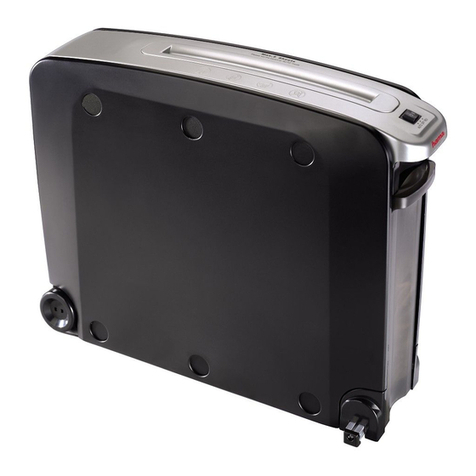
Hama
Hama CC 514S User manual
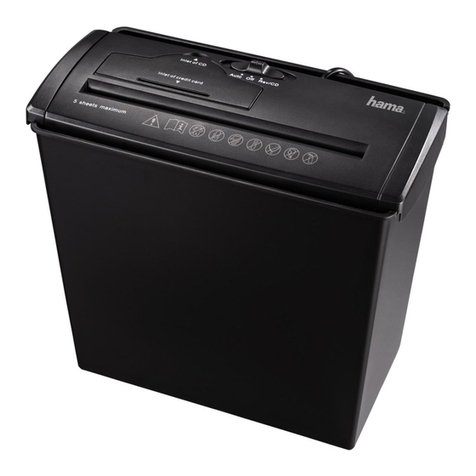
Hama
Hama BS5CD User manual
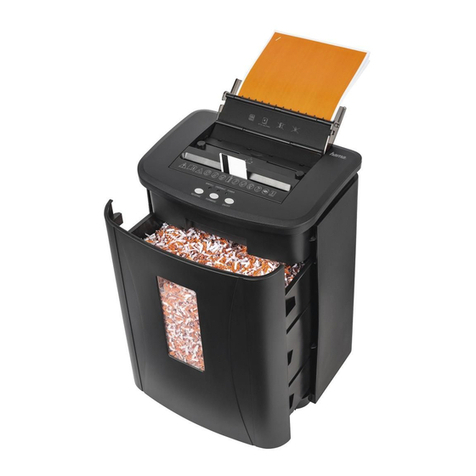
Hama
Hama PREMIUM AutoM120 User manual
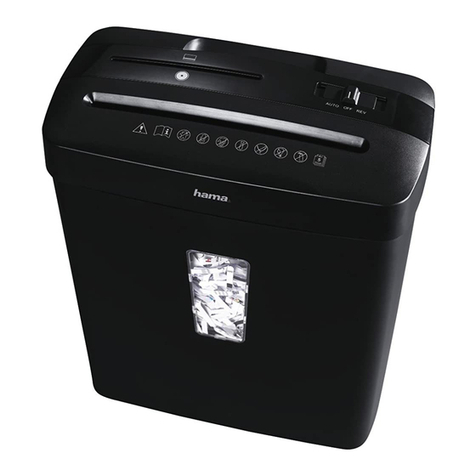
Hama
Hama BASIC X7CDA User manual
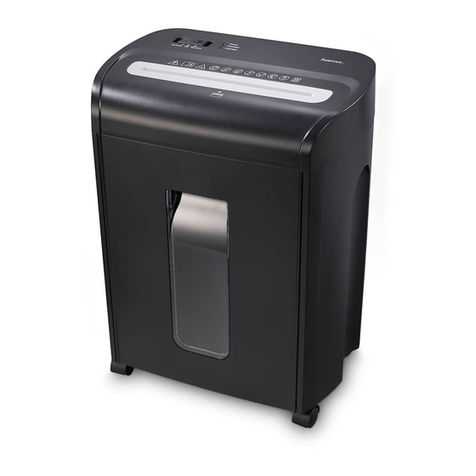
Hama
Hama PREMIUM M10 User manual

Hama
Hama HOME S7CD User manual
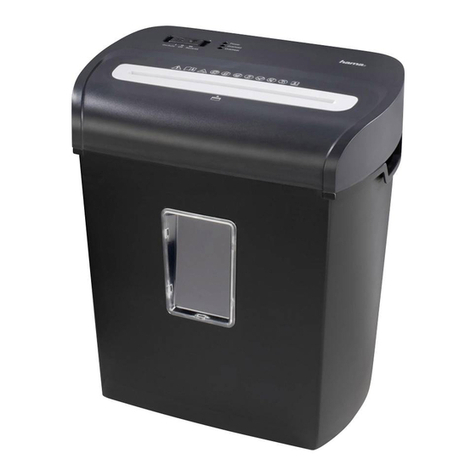
Hama
Hama PREMIUM M8 User manual

Hama
Hama BASIC S6 User manual
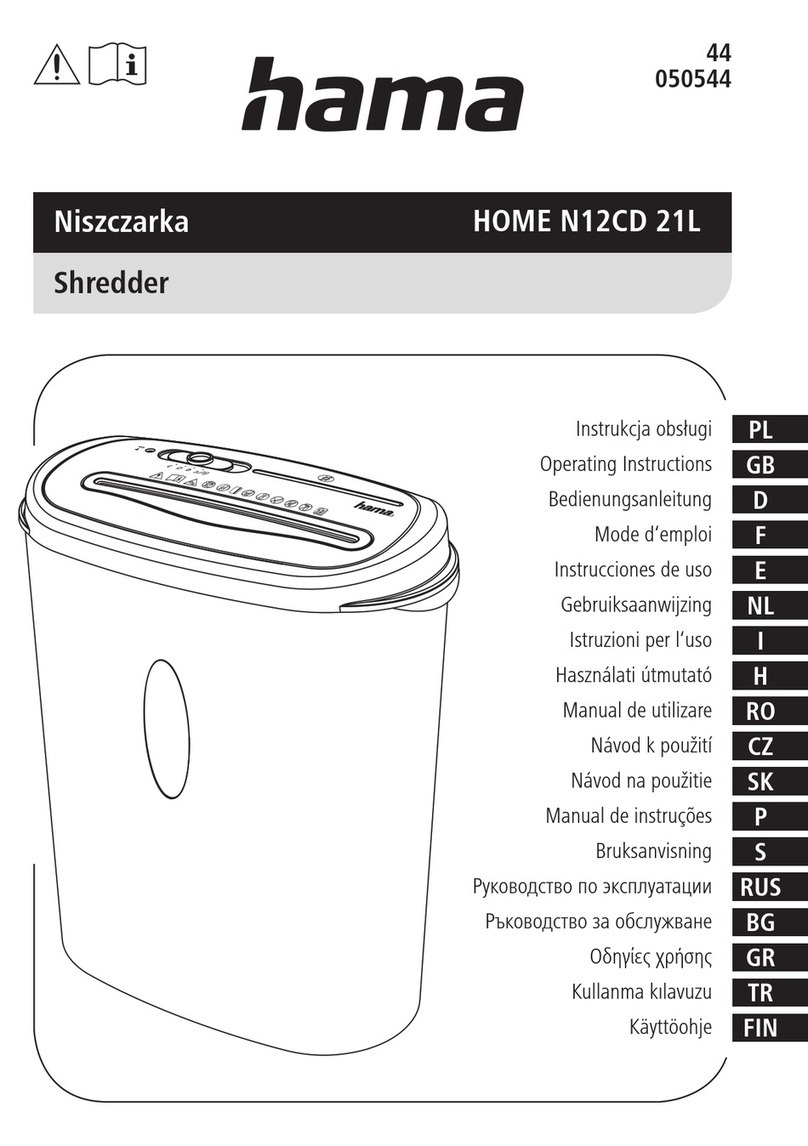
Hama
Hama HOME N12CD 21L User manual

Hama
Hama CC 612L User manual




